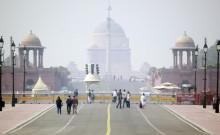
Lucknow, a city known for its rich cultural heritage and historical significance, is currently grappling with a surge in animal bite cases. Veterinary doctors in the city have attributed this alarming rise to an increasing dog population, resource scarcity, and extreme heat conditions. Over the last two months, the state capital has witnessed a 50% increase in animal bite cases. Dogs, the city's most common domestic animal, account for a staggering 90% of these cases. The remaining 10% is made up of cat and monkey bites, adding to the city's growing concern.
Daily Bite Cases and Vaccinations on the Rise
The data collected from three major government hospitals in Lucknow paints a grim picture. On average, these hospitals are reporting 120 bite cases daily. However, when considering follow-up patients receiving anti-rabies vaccines, the number escalates to around 350 daily. This indicates the severity of the situation and the urgent need for effective measures to curb this trend. The densely populated areas of Lucknow, such as Chowk, Maulviganj, Wazirganj, Rakabganj, and Saadatganj, are the most affected. The high population density in these areas provides an ideal environment for stray dogs to thrive, leading to an increase in dog bite incidents.
N.B. Singh, a medical professional from Balrampur Hospital, has noted a significant rise in the number of vaccinations administered daily. The number has almost doubled, from 80-90 to 150. Lokbandhu and SPM Civil hospitals report similar trends, with more than 130 patients getting inoculated daily, a significant increase from the previous average of 80.

Linking Aggression to Resource Scarcity and Heat
S.K. Malik, the former Director of the Animal Husbandry department, has linked the rise in animal bite cases to the increasing canine population and scarcity of resources. According to him, these factors are resulting in aggressive behavior among dogs. He suggests conducting regular surveys to monitor the dog population and adjusting the control programs accordingly. This proactive approach could help manage the dog population effectively and reduce the number of animal bite cases.
High temperatures and UV exposure are also contributing to this trend. These conditions affect dogs' dopamine levels, leading to increased aggression. This is a significant concern, especially during the summer months when temperatures in Lucknow can soar. Pramod Kumar Tripathi, a private veterinarian, has pointed out another contributing factor - the May-June breeding season. During this period, dogs experience higher cortisol levels and the absence of sweat glands leads to irritability among them. This, in turn, increases the likelihood of aggressive behavior and subsequent biting incidents.
The Lucknow Municipal Corporation's Animal Welfare Officer, Abhinav Verma, has also weighed in on the issue. He attributes the increase in bite cases to population growth. He stated that about 75% of the estimated 105,000 dogs in Lucknow have been sterilized. However, the remaining 25% still pose a significant threat to the city's residents.
In conclusion, the rise in animal bite cases in Lucknow is a pressing issue that requires immediate attention. The city needs to adopt a multi-pronged approach to tackle this problem effectively. This includes regular surveys to monitor the dog population, adjusting control programs, sterilization drives, and public awareness campaigns about responsible pet ownership and animal behavior. Only then can Lucknow hope to curb this alarming trend and ensure the safety of its residents.

















